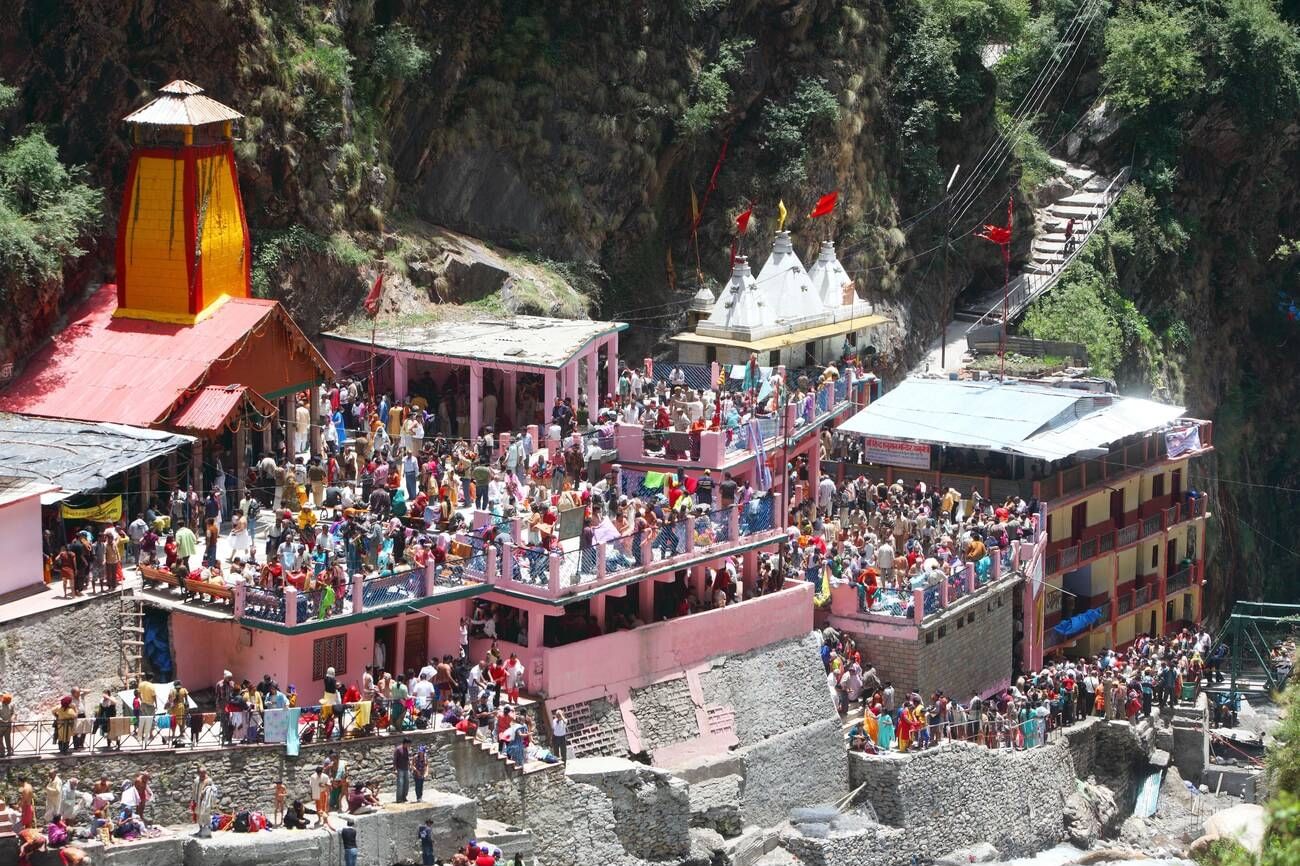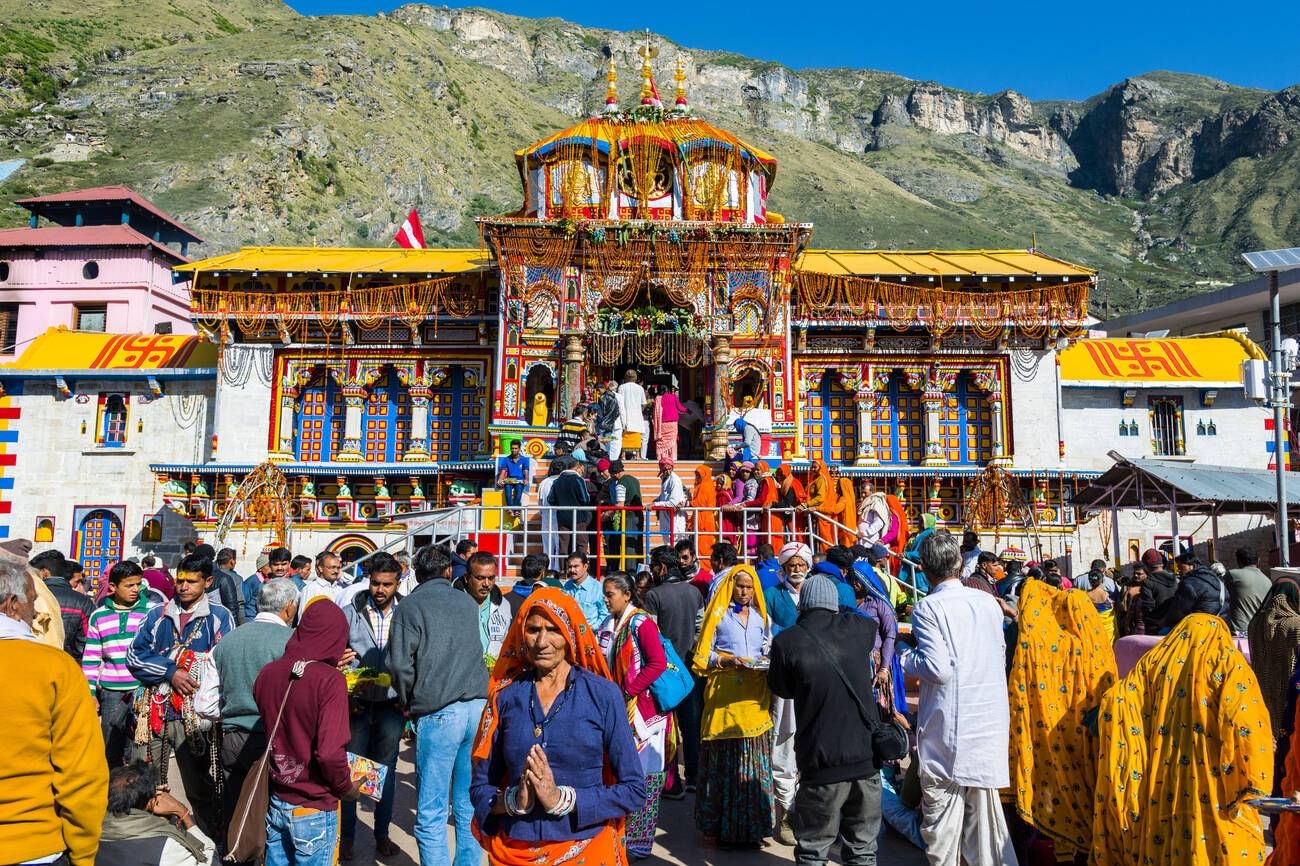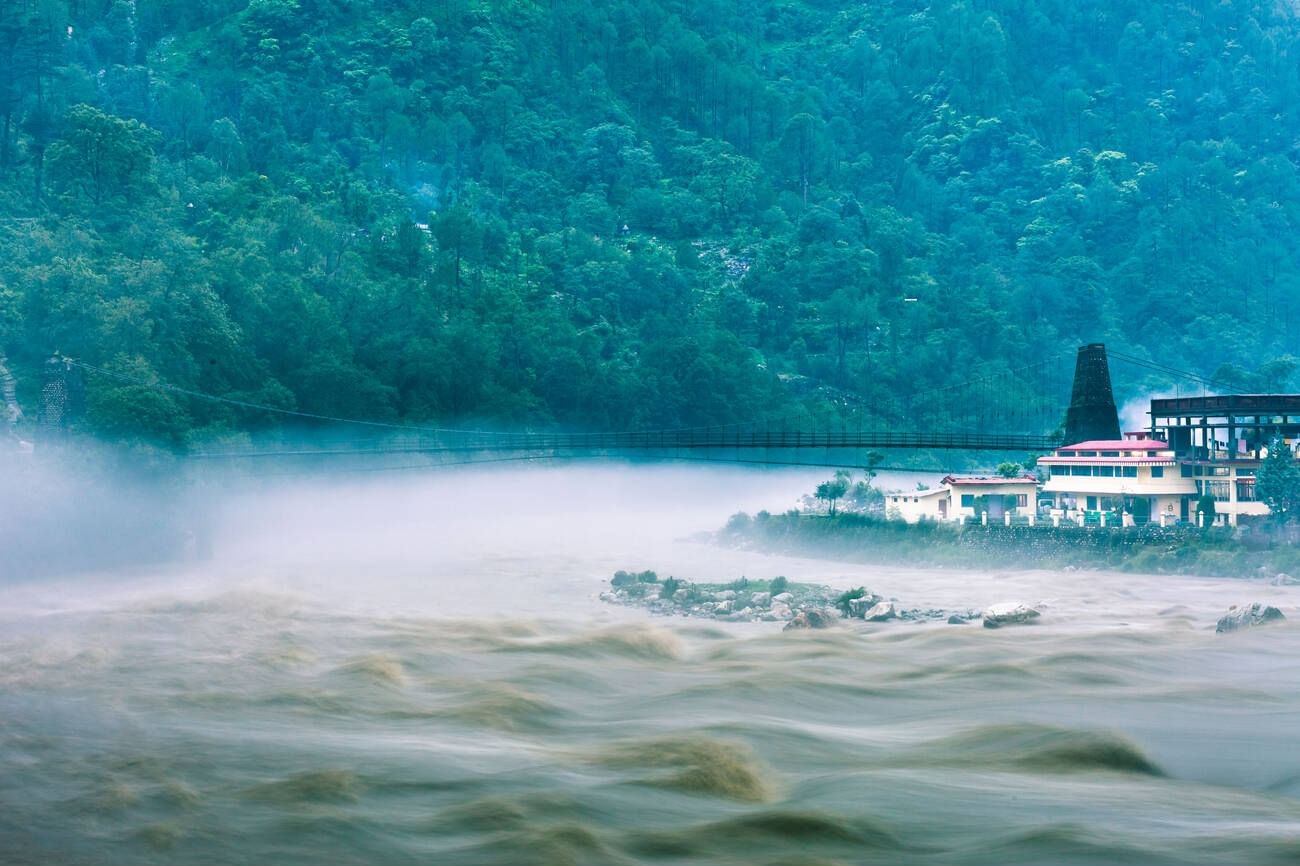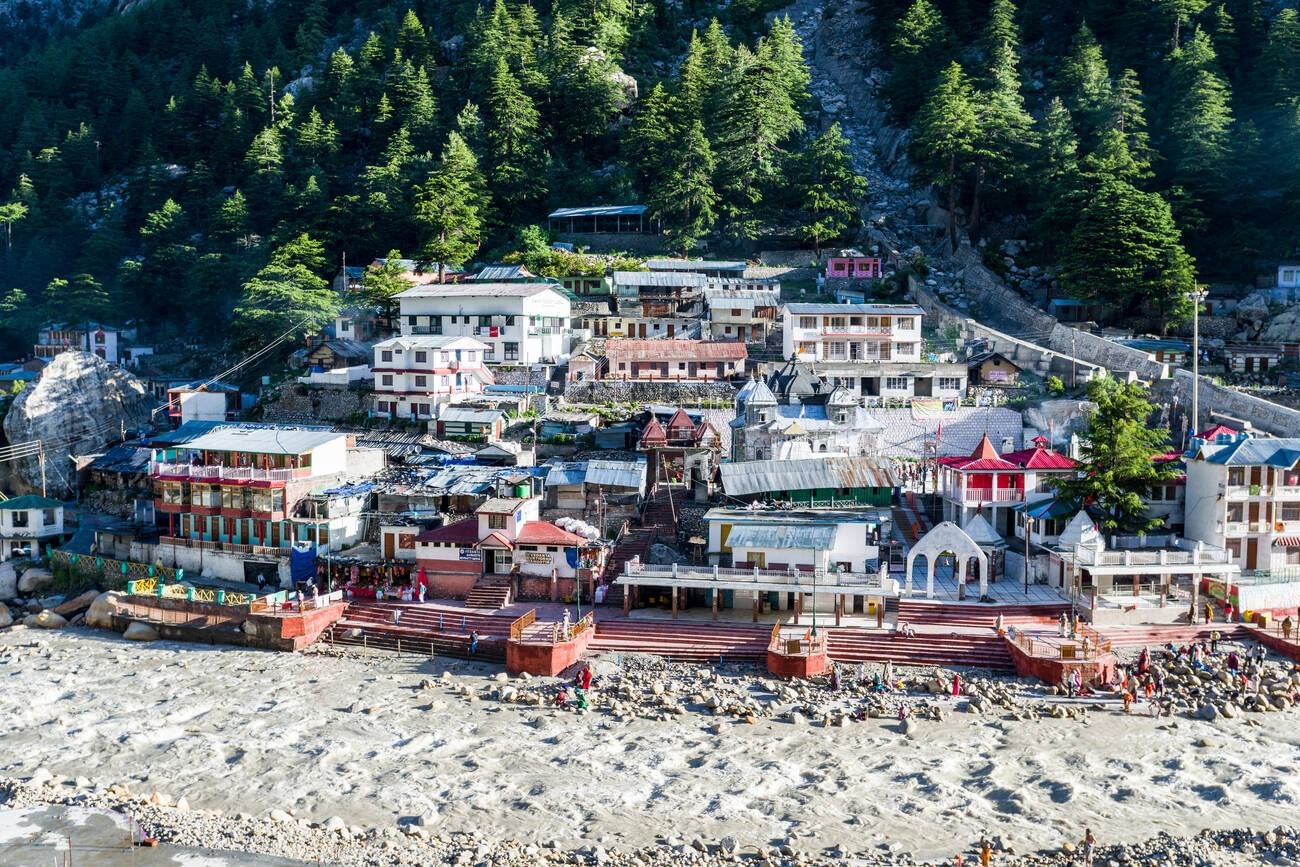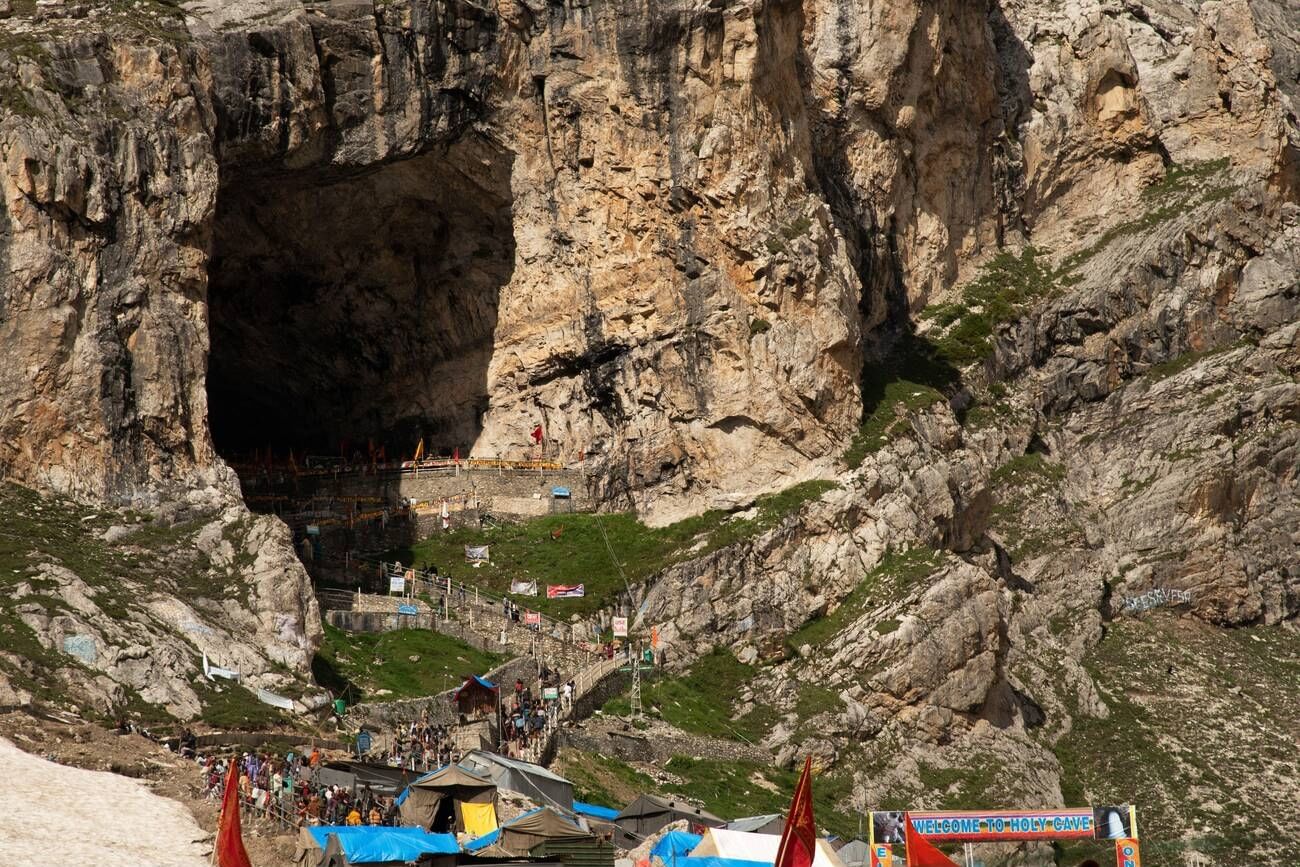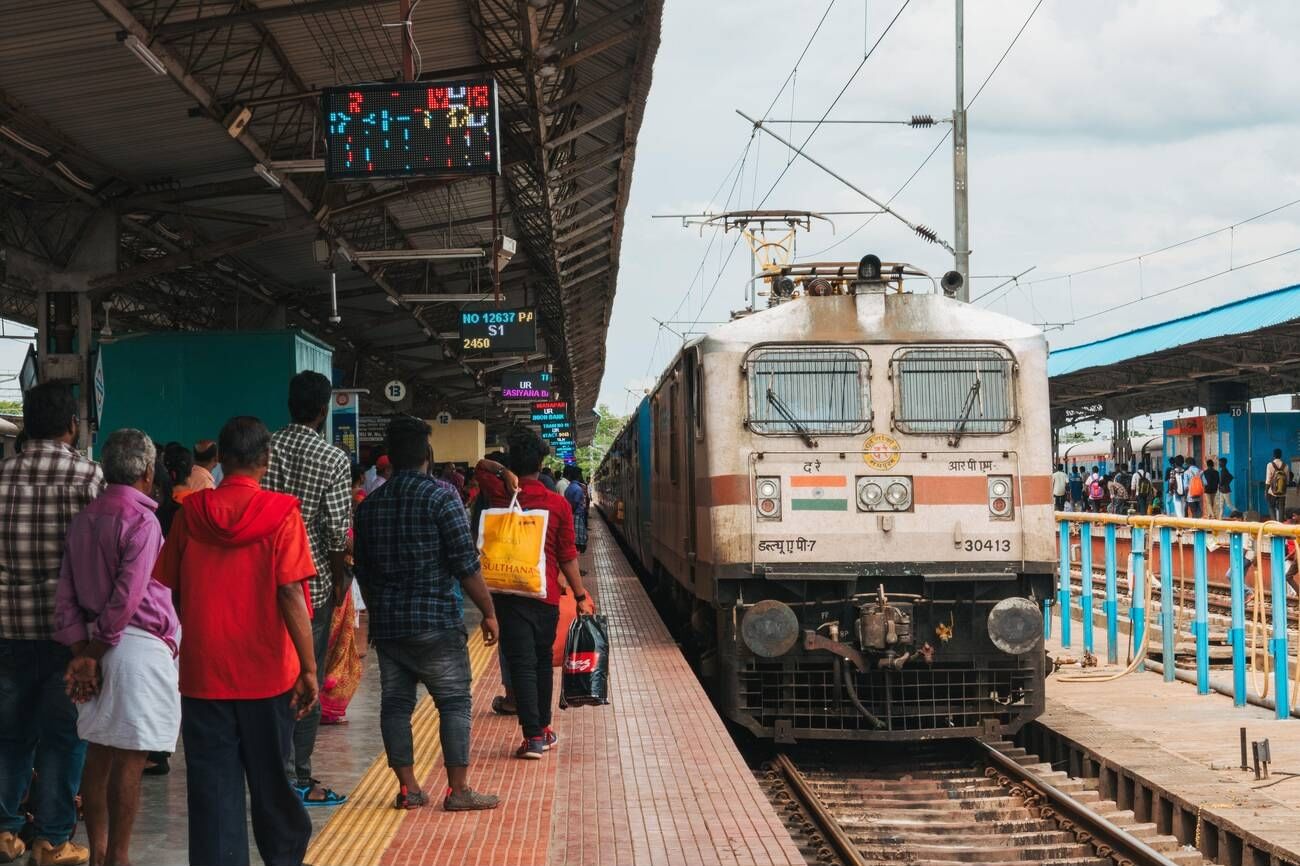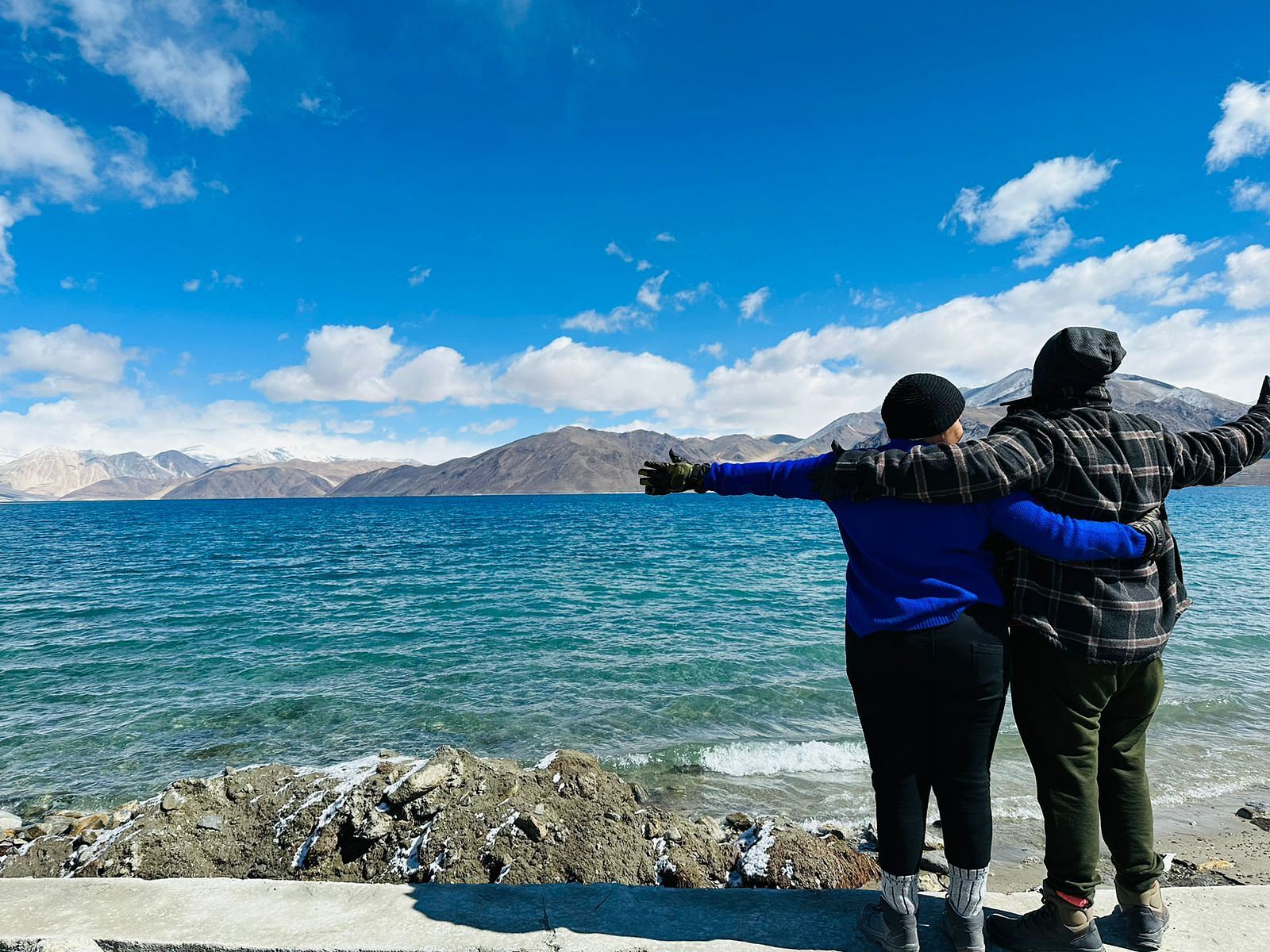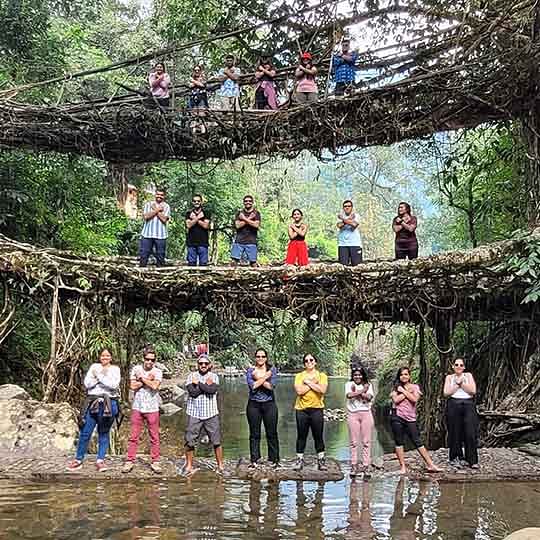What if you found a journey that offers not just stunning mountain views but also inner purity? Some trips are taken to explore the world, but the Char Dham Yatra is taken to discover yourself. So, if you’re planning your next India trip , let it begin with something extraordinary. Let your journey start with the Char Dham Yatra in 2026!
The sacred circuit, Yamunotri, Gangotri, Kedarnath, and Badrinath, represents purity, devotion, strength, and salvation. It’s believed that completing the Char Dham Yatra cleanses one’s sins and leads to spiritual liberation (moksha).
Read on to discover the best routes, travel tips, registration process, and everything you need to plan your Char Dham Yatra 2026 — a journey of faith, heart, and soul.
The Chardham Yatra is one of the most important Hindu pilgrimages, symbolizing a journey toward spiritual purification and liberation. The term Char Dham means Four Abodes, referring to four sacred sites that hold immense religious value in Hinduism.
Traditionally, the Char Dham refers to four pilgrimage destinations located in different parts of India — Badrinath in the north, Dwarka in the west, Puri in the east, and Rameswaram in the south. These were established by the great Hindu philosopher Adi Shankaracharya in the 8th century to unite the spiritual energies of the country.
Over time, another circuit known as the Chhota Char Dham or Himalayan Char Dham became equally revered. It includes Yamunotri, Gangotri, Kedarnath, and Badrinath in Uttarakhand. These temples are situated in the Garhwal region of the Himalayas and hold immense religious significance in Hinduism.
Each destination is dedicated to a specific deity. Yamunotri is dedicated to Goddess Yamuna, Gangotri to Goddess Ganga, Kedarnath to Lord Shiva, and Badrinath to Lord Vishnu. Pilgrims believe that visiting all four shrines in a single journey washes away sins and helps attain moksha, or spiritual liberation.
Suggested Read: Top 15 Pilgrimage Road Trips in India (2025 Guide)
Best Himalaya Tour Packages from Delhi:
The Four Holy Shrines of Char Dham in Uttrakhand
The Char Dham Yatra in Uttarakhand is one of India’s most sacred pilgrimage routes, guiding devotees through four divine temples high in the Garhwal Himalayas. Each temple has deep spiritual meaning and reflects a different aspect of faith and purity.
Together, these holy sites form what is often referred to as the Char Dham Yatra name in Uttarakhand, known collectively as the Chhota Char Dham.
Dedicated to Goddess Yamuna, this temple marks the origin of the sacred Yamuna River. Situated at an altitude of about 3,293 meters, Yamunotri is surrounded by snow-clad peaks and thermal springs, including the famous Surya Kund, where devotees cook rice as an offering to the goddess.
The journey to Yamunotri symbolizes the first step of the Chardham Yatra, representing purity and the start of one’s spiritual cleansing.
Dedicated to Goddess Ganga, this temple lies on the banks of the Bhagirathi River at an altitude of 3,100 meters. According to legend, this is where the River Ganga descended from heaven to earth.
Pilgrims visit Gangotri to seek forgiveness and spiritual purification, as the Ganges is believed to wash away all sins. The scenic beauty of pine forests, glaciers, and snow-capped mountains makes this shrine one of the most mesmerizing spots of the Char Dham circuit.
One of the twelve Jyotirlingas of Lord Shiva, Kedarnath Temple is located at an altitude of 3,583 meters near the Mandakini River. Surrounded by towering Himalayan peaks, the temple is believed to have been built by the Pandavas to atone for their sins after the Kurukshetra war.
Devotees undertake a challenging trek or helicopter ride to reach the shrine. Kedarnath represents strength, endurance, and devotion, making it one of the most spiritually powerful destinations of the yatra.
The final and most revered stop of the Chardham Yatra, Badrinath Temple is dedicated to Lord Vishnu. Situated at an altitude of 3,133 meters on the banks of the Alaknanda River, it is believed that Lord Vishnu meditated here for thousands of years.
The colorful façade, vibrant rituals, and backdrop of the Neelkanth Peak make it a sight to behold. Badrinath represents compassion, wisdom, and ultimate salvation (moksha).
Best Time for Char Dham Yatra
The best time for Char Dham Yatra India is from April/May to October/November, when the weather in the Himalayas is pleasant and the temples are open for devotees. The exact opening and closing dates change every year depending on the Hindu calendar and weather conditions.
- Summer Season (April to June):
This is the most popular and comfortable time for the yatra. The temperature ranges between 10°C and 25°C, making travel and trekking easier. The landscapes are vibrant, and all routes are accessible.
- Monsoon Season (July to August):
It is generally not recommended to travel during this time due to heavy rainfall and frequent landslides in the Garhwal region. However, some devotees still visit during this period for quieter temple experiences.
- Autumn Season (September to mid-November):
This is the second best time for the 4 Dham Yatra. The skies are clear, the weather is calm, and the post-monsoon greenery adds extra beauty to the mountains.
The temples usually close around Diwali, marking the end of the yatra season. Devotees planning the Char Dham Yatra 2026 are advised to check official temple opening dates in advance and avoid monsoon months for a safer and smoother experience.
Suggested Read: Pilgrimage to 12 Jyotirlinga in India – Complete Travel Guide
Recommended Route of Char Dham Yatra
The recommended route of Chardham Yatra follows a specific west-to-east direction, beginning with Yamunotri, then moving to Gangotri, Kedarnath, and finally Badrinath. This order is considered spiritually significant, as it represents the journey from purification to salvation, starting from the rivers (Yamuna and Ganga) and ending with the blessings of Lord Vishnu.
The yatra traditionally starts from Haridwar, Rishikesh, or Dehradun, which are well-connected by road, rail, and air. Pilgrims usually follow this route:
- Haridwar/Rishikesh → Barkot (Yamunotri base)
- Barkot → Yamunotri → return to Barkot
- Barkot → Uttarkashi (Gangotri base)
- Uttarkashi → Gangotri → return to Uttarkashi
- Uttarkashi → Guptkashi (Kedarnath base)
- Guptkashi → Gaurikund → Kedarnath → return to Guptkashi
- Guptkashi → Badrinath → return via Joshimath to Rishikesh/Haridwar
Char Dham Yatra Itinerary (9–10 Days)
Planning your Chardham Yatra becomes easier when you have a well-organized route. This 9–10 day itinerary covers all four shrines, starting from Haridwar/Rishikesh, the traditional gateway to the pilgrimage.
Day 1: Arrival in Haridwar / Rishikesh
- Arrive at Haridwar or Rishikesh by train, road, or flight to Dehradun.
- Visit Har Ki Pauri for Ganga Aarti in the evening.
- Overnight stay in Haridwar or Rishikesh.
Day 2: Haridwar – Barkot (Drive 210 km / 7 hrs)
- Begin your 4 Dham Yatra journey with a scenic drive via Mussoorie and Kempty Falls.
- Reach Barkot, the base for Yamunotri.
- Rest overnight.
Day 3: Barkot – Yamunotri – Barkot (Trek / 6 hrs total)
- Drive to Janki Chatti, then trek 6 km to Yamunotri Temple.
- Take a holy dip in Surya Kund and offer prayers to Goddess Yamuna.
- Return to Barkot for overnight stay.
Day 4: Barkot – Uttarkashi (Drive 100 km / 4 hrs)
- Depart for Uttarkashi, home to the Vishwanath Temple dedicated to Lord Shiva.
- Overnight stay in Uttarkashi.
Day 5: Uttarkashi – Gangotri – Uttarkashi (Drive 200 km round trip)
- Drive along the Bhagirathi River to Gangotri Temple.
- Offer prayers to Goddess Ganga and enjoy the serene Himalayan views.
- Return to Uttarkashi for the night.
Day 6: Uttarkashi – Guptkashi (Drive 220 km / 8 hrs)
- Early morning drive to Guptkashi via Tehri Dam and Rudraprayag.
- Visit the Ardhnarishwar Temple in the evening.
- Overnight stay in Guptkashi.
Day 7: Guptkashi – Kedarnath (Trek or Helicopter)
- Drive to Gaurikund, then start the 16 km trek to Kedarnath Temple (or opt for a helicopter service).
- Visit the ancient Kedarnath Temple dedicated to Lord Shiva.
- Overnight stay in Kedarnath (basic accommodation).
Day 8: Kedarnath – Guptkashi (Return)
- Early morning darshan at Kedarnath Temple.
- Trek or fly back to Guptkashi.
- Rest overnight.
Day 9: Guptkashi – Badrinath (Drive 180 km / 7 hrs)
- Drive through beautiful Joshimath and reach Badrinath.
- Visit Badrinath Temple, dedicated to Lord Vishnu.
- Evening Aarti and overnight stay in Badrinath.
Day 10: Badrinath – Joshimath – Rishikesh/Haridwar (Drive 300 km / 9 hrs)
- Visit Mana Village (the last Indian village near the Tibet border).
- Return journey to Haridwar or Rishikesh.
- Yatra concludes with divine blessings and lifelong memories.
Suggested Read: 13 Places To Visit In Uttarakhand In 2025
Char Dham Yatra Registration 2026 – Process and Requirements
The government of Uttarakhand has made it mandatory for all pilgrims to register in advance to ensure safety and streamline the pilgrimage. Char Dham Yatra registration can be completed online via the official website or mobile app, and you can also register offline at designated counters.
Online (Recommended)
- Visit the official portal at registrationandtouristcare.uk.gov.in and click “Register/Login”.
- Create an account by entering your name, mobile number, and email. You’ll receive an OTP for verification.
- Log in and navigate to “Create/Manage Tour Info” → “Add New Tour”. Enter trip duration, temple visit dates (Yamunotri, Gangotri, Kedarnath, Badrinath), and the number of pilgrims.
- Add each pilgrim’s details: age, gender, contact, emergency contact, recent passport‑sized photo, and scanned ID proof.
- Submit the form and download/print the e‑pass (Yatra Registration Letter) with QR code, which must be shown at checkpoints.
Other Online Modes:
- Mobile App: Download “Tourist Care Uttarakhand” (available on Android and iOS) and follow the same registration steps.
- WhatsApp: Send the word “Yatra” to +91‑8394833833 and follow the prompts to complete registration.
Offline Registration:
Char Dham Yatra registration counters are available at major locations like Haridwar Railway Station, Triveni Ghat (Rishikesh), Sonprayag, Barkot, and others along the route. You’ll fill out a physical form and submit copies of your ID and photograph.
Documents & Requirements:
- Valid government‑issued photo ID (Aadhaar, Passport, Voter ID, Driving Licence, etc.)
- Recent passport‑sized photograph
- Active mobile number and email ID
- Emergency contact details
- (Recommended/mandatory for certain groups) Medical fitness certificate, especially for senior citizens (70+ years) or those trekking to Kedarnath due to high altitude.
Key Tips:
- Register well in advance to avoid last‑minute rush and secure your dates.
- Carry both digital and printed copies of your e‑pass and ID throughout the journey, paperless doesn’t always work in the mountains.
- Be physically prepared: this yatra involves long travel, higher altitudes, and trekking; pack warm clothes, first‑aid, and altitude‑appropriate gear.
- Stay updated on weather and road conditions, especially if you plan to travel during or just after the monsoon season.
Suggested Read: 15+ Best Things To Do In Uttarakhand In 2025
Travel Options for Char Dham Yatra
Pilgrims have multiple travel options to undertake the 4 Dham Yatra, depending on convenience, budget, and fitness level. The journey typically starts from Haridwar, Rishikesh, or Dehradun, which are well-connected by road, rail, and air.
By Road
Private taxis, cabs, and buses are widely available.
Roads connect all four shrines, though some stretches involve steep mountain drives.
Ideal for travelers who enjoy scenic drives and stopping at local attractions along the way.
By Train
Nearest railway stations: Haridwar, Rishikesh, and Dehradun.
Haridwar is the most popular station due to its connectivity with major Indian cities.
From the station, pilgrims hire taxis or take buses to begin the yatra.
By Air
Nearest airport: Jolly Grant Airport, Dehradun.
Well-connected with major cities like Delhi, Mumbai, and Kolkata.
Pilgrims can hire taxis from the airport to reach Haridwar, Rishikesh, or directly to the yatra route.
By Helicopter
Helicopter services are available for Yamunotri, Kedarnath, and Badrinath, significantly reducing travel time.
Ideal for elderly or physically challenged devotees or those short on time.
Char Dham Yatra by Helicopter
Char Dham Yatra by helicopter provides a faster and more convenient way to complete the yatra, allowing pilgrims to visit Yamunotri, Gangotri, Kedarnath, and Badrinath in 5–6 days, compared to the traditional 9–10 day road journey.
Packages typically include VIP darshan arrangements, guided transfers, and comfortable stays at Himalayan towns along the route. The aerial journey also offers breathtaking views of snow-capped peaks, rivers, and valleys.
Key Features:
- Covers all four shrines quickly, ideal for travelers with limited time.
- Comfortable and accessible for elderly pilgrims, families, or those not keen on long treks.
- Offers stunning Himalayan aerial views.
Important Details & Considerations:
- Cost: Helicopter packages are significantly more expensive than road travel, with some 5N/6D packages costing around ₹2,30,000 per person.
- Yamunotri Access: Even with helicopters, a short trek or pony/palki may be needed as the helipad is some distance from the temple.
- Weather & Safety: High-altitude flights are subject to weather delays or cancellations; authorities have flagged safety concerns.
- Booking: Reserve well in advance as slots fill up quickly; verify the legitimacy of operators.
Suggested Read: 22 Best Places to Visit in Dehradun | 2025 Travel Guide
Tips for Travelers on Char Dham Yatra
- Get a medical check‑up beforehand and carry essential medication, especially if you have heart, lung, or other health issues. Altitude sickness is common.
- Pack smart: warm layered clothing, waterproof jacket, good trekking shoes, sunscreen, torch, and basic first‑aid kit.
- Respect local customs: dress modestly at temples, avoid alcohol and non‑vegetarian food in sacred zones, don’t litter or pollute the rivers/trails.
- Stay flexible: Mountain roads can get blocked, weather can change rapidly — plan buffer time in your itinerary.
- Carry enough cash and keep digital payment backups. Many remote locations may not accept cards or have ATM access.
So, here you are, ready to embark on the Char Dham Yatra India! Remember, this isn’t just a journey to four temples, it’s a journey to reconnect with yourself, find inner peace, and soak in some of the most breathtaking views India has to offer.
Yes, the roads can be winding, the treks a bit challenging, and the weather unpredictable, but that’s all part of the adventure. Take it slow, enjoy the little moments, and don’t forget to capture memories (both in your heart and on your camera).
Pack your patience, your enthusiasm, and your spirit of devotion. And most importantly, let yourself be present, because the magic of the Yatra is felt in every step, every prayer, and every serene view along the way.





